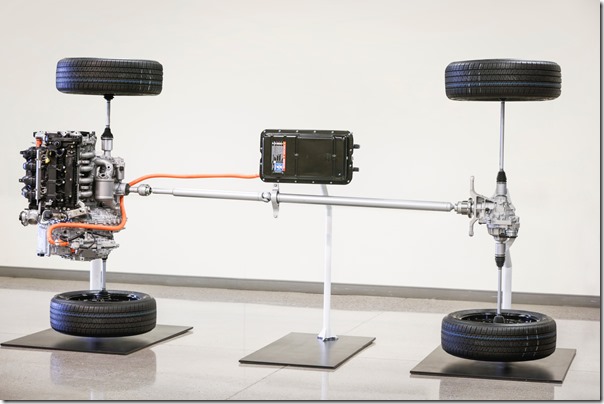Ford Improves Its Hybrid Vehicles with Gen IV Hybrid Technology
Ford is no stranger to hybrids. Yet all things considered, it hasn’t seemed to be that engaged. And that’s changing in a big way.
#hybrid #electronics
Ford will soon be launching its Gen IV hybrid technology in the 2020 Escape, 2020 Explorer and the 2020 Police Interceptor Utility.* Gen I goes back to the model year (MY) 2005 Escape. Gen II ran from MY 2009 to 2012; it was used in the Fusion and the Escape. Gen III, MY 2012 to 2019, had a bigger use portfolio, including the CMAX Hybrid and Energi (a plug-in hybrid (PHEV)) and the Fusion Hybrid and Energi.
While Ford isn’t necessarily associated with hybrids as, say, Toyota, like Toyota, the Ford engineers have been performing some rather remarkable continuous improvement on the hybrid system over the years.
Consider the batteries.

The black box in the middle is the lithium-ion battery in the Ford Gen IV hybrid
(Images: Ford)
For the first two generation, nickel-metal hydride batteries were used. Gen II, compared to Gen I, has a battery with 70% the mass, 84% the volume and 120% the power density.
Gen III and IV use lithium-ion batteries.
Compared with Gen I batteries, Gen III has 47% the mass, 65% the volume and 140% the power density.
For Gen IV, things are most impressive. Realize that a smaller volume for the battery pack means more room for people and things; improved power density contributes to a greater all-electric range—they’re estimating approximately 30 miles for a PHEV Escape—and mass reduction is a goal for vehicles, regardless of propulsion setup.
The Gen IV battery is 39% the mass, 33% the volume, and it has 192% the power density.
Ford believes that hybrids represent an affordable alternative to full EVs while providing better fuel efficiency than internal combustion engines alone.
According to Dave Filipe, Ford vice president of Powertrain Engineering, while the company is aggressively pursuing electric population systems and will continue to improve and refine its internal combustion engine (ICE) offerings, the company believes that hybrids represent an affordable alternative to full EVs while providing better fuel efficiency than ICEs alone. Looking ahead to around 2030, it could be that each type of system would represent a third of what’s under the hoods of Ford vehicles.
*You might be thinking: “A police vehicle hybrid? It must be engineered for applications like parking enforcement.” And you would be incorrect.
The Police Interceptor Utility produces 318 hp (this is the 3.3-liter V6 and hybrid motor output) and 322 lb-ft of torque. It has a top speed of 137 mph and goes from 0 to 100 mph in 17.7 seconds. That’s per testing by the Michigan State Police, not Ford.

“Yeah, it has a hybrid in there.”
There is a police-specific advantage to the hybrid beyond just speed.
According to Ford, a police vehicle can spend 60% of its time idling. So with the hybrid, they’ve calculated that based on $2.75 for a gallon a gas, that would result in saving of $3,500 per year. The engine shuts off, yet the electronic equipment in the vehicle continues to operate as normal, drawing power from the lithium-ion battery.
As $3,500 is the premium Ford is charging for the hybrid in the Police Interceptor Utility, this means that year two is all to the upside as regards municipal revenue.
RELATED CONTENT
-
Frito-Lay, Transportation and the Environment
Addressing greenhouse gas reduction in the snack food supply chain
-
Special Report: Toyota & Issues Electric
Although Toyota’s focus on hybrid powertrains at the seeming expense of the development of a portfolio of full battery electric vehicles (BEVs) for the market could cause some concern among those of an environmental orientation, in that Toyota doesn’t seem to be sufficiently supportive of the environment, in their estimation. Here’s something that could cause a reconsideration of that point of view.
-
On Fuel Cells, Battery Enclosures, and Lucid Air
A skateboard for fuel cells, building a better battery enclosure, what ADAS does, a big engine for boats, the curious case of lean production, what drivers think, and why Lucid is remarkable


.jpg;width=70;height=70;mode=crop)






